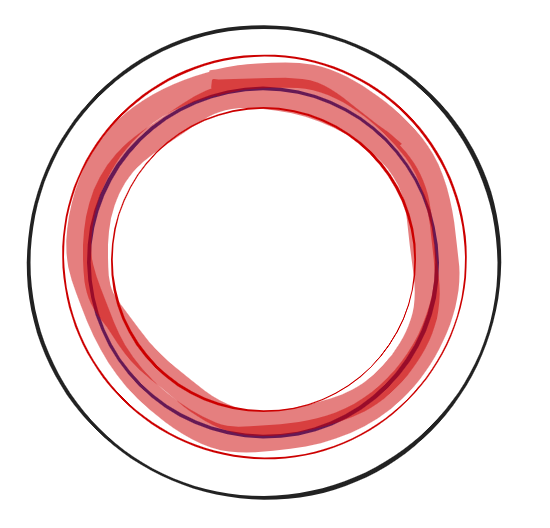Let $f_\theta$ be the probability (mass or density) distribution function of a random variable $X$, which depends on some given parameter $\theta$ then you can write:
$$
f_\theta(x)= f_\theta(x | \theta).
$$
For example, you have a normal random variable $X$ with standard deviation $1$, but you don't know its mean $\mu$ (that acts like the above $\theta$). So you can have a family of functions $f_\mu$ parameterized by $\mu$:
$$
f_\mu(x) = f_\mu(x|\mu) = \frac{1}{\sqrt{2\pi}}e^{\frac{-(x-\mu)^2}{2}}.
$$
Varying $\mu$ you will get different $f_\mu$'s and those $f_\mu$'s all belong the same family of functions where each one is characterized by a specific value of $\mu$. Of course, you can parameterize those functions based on $\sigma$ instead of $\mu$, or even both.
With that in mind, now given some fixed $x^\star\in range(X)$, the likelihood of $\theta$ is defined to be:
$$
\mathcal{L}(\theta|x^\star)=f_\theta(x^\star|\theta)
$$
So in the normal distribution example above, it means that after you have a bunch of graphs of $f_\mu$'s with different $\mu$ values, now with $x^\star\in range(X)$ fixed and you can collect different values of $f_\mu(x^\star)$ according to different values of $\mu$'s. This maps each value of $\mu$ to $f_\mu(x^\star)$ (or $f_\mu(x^\star|\mu)$) given some fixed $x^\star$ and is called the likelihood function of $\mu$ (for some fixed $x^\star$).
For your question, assuming you have the Bernoulli distribution for $X$. Denote by $x$ the number of success outcomes after $n$ trial, then:
$$
f_p(x)= \binom{n}{x} p^x(1-p)^{(n-x)},\hspace{1em}x\in\lbrace 0 , 1, ..., n\rbrace.
$$
then follow the above "procedure" you can clearly construct likelihood functions based on any fixed number of success outcomes of $X$ after $n$ trials. For example, fix $x=0$ you have
$$
\mathcal{L}(p|0)=f_p(p|0)=\binom{n}{0} p^0(1-p)^{(n-0)}=(1-p)^n.
$$
It means that if you have zero success after $n$ trials then $\mathcal{L}(p|0)=(1-p)^n$. Notice that $\mathcal{L}(p|0)$ attains maximum value at $p=0$ which can be translated into "given zero success outcome on $n$ trials, it's natural to assume $p$=0".

